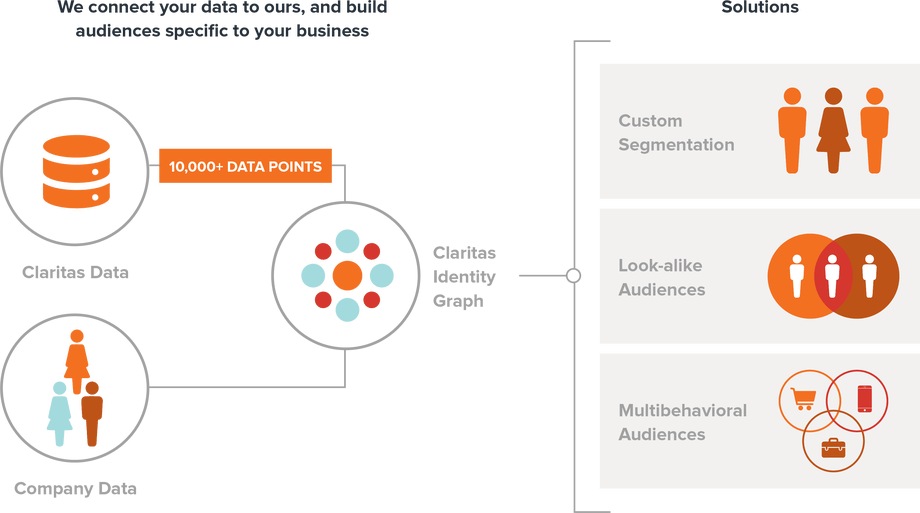An In-Depth Guide to Multivariate Segmentation
Tools, Strategies, and Alternatives
In today’s marketing landscape, multivariate segmentation has become an essential tool for businesses seeking to refine their target audience and maximise the relevance of their campaigns. Unlike traditional segmentation, which focuses on one or two variables (such as age or income), multivariate segmentation combines multiple data points to create highly specific audience profiles. This approach allows marketers to go beyond basic demographics and craft campaigns tailored to nuanced consumer behaviours, lifestyles, and preferences.
The Marketing Made Clear Podcast
This article features content from the Marketing Made Clear podcast. You can listen along to this episode on Spotify:
What Is Multivariate Segmentation?
Multivariate segmentation is the practice of using multiple variables; demographic, geographic, behavioural, and psychographic; to create a detailed customer profile. It’s about honing your audience to be as relevant as possible, ensuring that your marketing resonates with the right people in the right way.
For example, instead of targeting “women aged 30-50,” multivariate segmentation might refine the profile to “women aged 30-50 in urban areas, earning £50,000+ annually, interested in sustainable fashion, and frequenting online marketplaces.”
Platforms for Multivariate Segmentation
Several platforms are designed to assist marketers in creating these detailed profiles by linking large datasets such as census information, transaction histories, and consumer lifestyle patterns. These platforms can drill down to specific postcodes, streets, or even households. Here’s a closer look at some of the most popular options:
1. Claritas
Claritas offers robust segmentation tools that combine demographic, geographic, and behavioural data. Its flagship product, the PRIZM segmentation system, categorises consumers into lifestyle segments based on where they live and shop.
This makes it ideal for businesses targeting highly specific neighbourhoods.
2. Experian
Experian’s segmentation tools are among the most comprehensive, boasting databases with over 5 million British businesses. Its consumer segmentation system includes Mosaic, which breaks down audiences into 66 unique lifestyle types within 15 overarching groups. For example:
- Corporate Chieftains fall into Group A and account for just over 1% of households in the UK.
- Other categories provide equally specific insights, helping marketers understand not only the size of their target audience but also their behaviours and preferences.
However, Experian’s licence fees can range from £5,000 to £75,000 or more, making it a significant investment.
3. Acxiom
Acxiom provides tools for both B2C and B2B segmentation. Its data services integrate offline and online behaviour to create highly detailed audience profiles, enabling seamless targeting across multiple marketing channels.
Acxiom is best suited to data-driven marketing, offering detailed consumer insights by integrating offline and online behaviour, making it ideal for businesses looking to execute highly personalised, multichannel campaigns across digital, email, and direct marketing platforms.
4. MapInfo
MapInfo specialises in geographic segmentation, linking customer location data with lifestyle and demographic insights.
It’s particularly useful for location-based marketing, leveraging geographic data to help businesses in retail, real estate or service businesses that need to target specific regions or areas with precise local insights.

When to Use Bespoke Market Research
While segmentation platforms are powerful, they may not always offer the specificity or nuance required for certain projects. This is where bespoke market research comes into play. Companies like Censuswide (where my brother James and sister Joey work, so you know they’re good!), can design customised research studies tailored to your exact needs.
Advantages of Bespoke Research
- Relevance: Research focuses exclusively on your specific audience and goals.
- Flexibility: You can explore niche variables or unique behaviours not covered by standard platforms.
- Cost-Effectiveness: For smaller campaigns or highly targeted efforts, bespoke research might be more affordable than expensive platform licences.
When to Choose Bespoke Research
Consider bespoke research if:
- Your target audience is highly specific or unique.
- You need fresh, primary data that existing platforms don’t provide.
- Budget constraints make platform subscriptions prohibitive.
Balancing Precision and Practicality
When building a customer profile through multivariate segmentation, it’s essential to strike a balance between specificity and practicality. Here are some considerations:
1. Be Selective About Variables
While multivariate segmentation can use numerous data points, not all are relevant. For example:
- Segmenting by hair colour is crucial if you’re selling hair dye but irrelevant for coffee marketers.
- Income is critical for luxury goods but less so for fast-moving consumer goods (FMCGs).
2. Understand Platform Limitations
Every platform, from Meta Ads to the Royal Mail Targeting Platform, has its own set of variables and tools. Your segmentation profile must translate into the settings available on your chosen marketing channel.
3. Consider Multichannel Campaigns
For campaigns spanning multiple channels, consistency is key. A detailed segmentation profile built for digital ads may need adjustments when applied to direct mail or out-of-home advertising platforms.

Multivariate Segmentation in Action
Digital Campaigns
Platforms like Meta Ads allow marketers to combine demographic, geographic, and behavioural data to refine audience targeting. For example:
- Target: “Women aged 25-40 in urban areas, interested in sustainable skincare, and actively engaging with similar brands online.”
Direct Mail Campaigns
Using tools like Royal Mail’s targeting platform, marketers can align their segmentation profile with geographic and demographic variables to deliver personalised mail campaigns.
Luxury Marketing
For premium brands, multivariate segmentation might include:
- Income
- Lifestyle preferences (e.g., frequent travellers)
- Purchase history (e.g., loyal to specific high-end retailers)
Occasional Campaigns
For seasonal or one-off purchases like Mother’s Day gifts, segmentation might rely on demographic and geographic insights rather than behavioural data, as these events don’t repeat frequently.
Conclusion: Which Approach Is Right for You?
Multivariate segmentation is a powerful approach for modern marketers, offering the ability to craft precise, effective campaigns. Whether you use a platform like Claritas or Experian, or commission bespoke research with a company like Censuswide, the key is to choose the approach that best suits your goals and budget.
For larger businesses with diverse audiences, platforms like Experian or Acxiom provide unparalleled insights. However, if your needs are more specific, or your budget more constrained, bespoke research might be the better option. Ultimately, the right approach will depend on your audience, your resources, and your campaign objectives.
By combining the right tools with strategic thinking, marketers can move beyond surface-level segmentation and achieve meaningful connections with their target audiences.


